Processing and Analysis of Micro-Arc Oxidation Coating on 319S Aluminum Alloy
Abstract
1. Introduction
2. Experimental
2.1. Preparation of MAO Coating
2.2. Characterization and Testing of MAO Coating
3. Results and Discussion
3.1. Influence of Pulse Width on Surface Hardness and Thickness of MAO Coating
3.2. Influence of Negative Voltage on the Cross-Sectional Morphology of MAO Coating
3.3. Influence of KOH Concentration on the Microscopic Morphology of MAO Coating
3.4. Element Distribution and Phase Composition of the Coating
3.5. Wear Resistance of MAO Coating
3.6. Discussion
4. Conclusions
- With an increase in pulse width, the thickness of the MAO coating gradually increases, while the surface hardness initially increases and then decreases. With an increase in negative voltage, the density of the coating initially increases and then decreases, and the thickness of the dense layer initially increases and then decreases, while the surface hardness initially increases and then decreases. With an increase in the KOH concentration, the coating thickness gradually increases, and the surface roughness initially decreases and then increases.
- The optimal process parameters for achieving high surface hardness and wear resistance on 319S aluminum alloy are as follows: positive voltage of 540 V, negative voltage of 130 V, current density of 7 A/dm2, pulse interval of 500 ms, pulse width of 3000 ms, KOH concentration of 1 g/L, and a treatment time of 40 min.
- The coating prepared with the optimal process parameters exhibited a hardness of 1426.8 HV, a dense layer thickness of 55 μm, and a surface roughness of Ra 0.083 μm. Compared to the matrix alloy, the hardness was increased by over 10 times and the roughness was reduced by approximately 8 times. Compared to previous MAO processes, the coating thickness had increased by 2–3 times.
- The 319S aluminum alloy treated with the optimal process parameters exhibited significantly reduced wear. The width of the wear scar was reduced by approximately 30%, and the depth was reduced by over 98%. The friction coefficient of the coating remained stable at around 0.4, indicating excellent wear resistance of the MAO coating.
Author Contributions
Funding
Institutional Review Board Statement
Informed Consent Statement
Data Availability Statement
Conflicts of Interest
References
- Zhu, Q. Semi-solid molding: Competition to cast and machine from forging in making automotive complex components. Trans. Nonferrous Met. Soc. China 2010, 20, s1042–s1047. [Google Scholar] [CrossRef]
- Mahmoud, T.S. Surface modification of A390 hyper eutectic Al-Si cast alloys using friction stir processing. Surf. Coat. Technol. 2013, 228, 209–220. [Google Scholar] [CrossRef]
- Zhang, Z. Research on Semi-Solid Die Casting Process and Microstructure Properties of 319s Aluminum Alloy. Master’s Thesis, Shenyang University of Technology, Shenyang, China, 2022. [Google Scholar]
- Ren, S. Study on Semi-Solid Die Casting Process and Microstructure Properties of Aluminum Alloys. Master’s Thesis, Shenyang University of Technology, Shenyang, China, 2021. [Google Scholar]
- Gao, J.; Zhu, Q.; Hu, X.; Li, L.; Li, D.; Kang, Y. Effect of Mixed Rare Earth on Microstructure and Aging Behavior of Sr-Modified 319s (Al-6Si-3Cu–0.3 Mg) Aluminum Alloy. Chin. J. Rare Met. 2019, 28, 1–9. [Google Scholar]
- Yang, B.; He, Y.; Li, D.; Zhu, Q. Effect of Surface Shot Peening Treatment on Salt Spray Corrosion Resistance of SSM319s Aluminum Alloy. Chin. J. Rare Met. 2014, 38, 941–947. [Google Scholar]
- Mi, T.; Jiang, B.; Liu, Z.; Fan, L. Plasma formation mechanism of micro-arc oxidation. Electrochim. Acta 2014, 123, 369–377. [Google Scholar] [CrossRef]
- Li, X.J.; Zhang, M.; Wen, S.; Mao, X.; Huo, W.G.; Guo, Y.Y.; Wang, Y.X. Microstructure and wear resistance of micro-arc oxidation ceramic coatings prepared on 2A50 aluminum alloys—ScienceDirect. Surf. Coat. Technol. 2020, 394, 125853. [Google Scholar] [CrossRef]
- Shen, D.; Li, G.; Guo, C.; Zou, J.; Cai, J.; He, D.; Ma, H.; Liu, F. Microstructure and corrosion behavior of micro-arc oxidation coating on 6061 aluminum alloy pre-treated by high-temperature oxidation. Appl. Surf. Sci. 2013, 287, 451–456. [Google Scholar] [CrossRef]
- Zhu, L.; Qiu, J.; Chen, J.; Zhang, W.; Chen, Z.; Zhang, T.; Wang, F. Microstructure and corrosion resistance of the PEO coating on extruded Al6Cu alloy. Surf. Coat. Technol. 2019, 369, 116–126. [Google Scholar] [CrossRef]
- Shen, Y.; Sahoo, P.K.; Pan, Y. Analysis of Microstructure and Properties of Micro-Arc Oxidation Coatings on 2A12 Aluminum Alloys for Marine Applications. Mar. Technol. Soc. J. 2018, 52, 120–128. [Google Scholar] [CrossRef]
- Li, K.; Li, W.; Zhang, G.; Duan, Q. Study on Microarc Oxidation and Coating Characteristics of Aluminum Alloys with Different Silicon Content. J. South China Univ. Technol. 2015, 7, 1–7. [Google Scholar]
- Wang, L.; Nie, X. Silicon effects on the formation of EPO oxide coatings on aluminum alloys. Thin Solid Film. 2006, 494, 211–218. [Google Scholar] [CrossRef]
- Wang, K.; Koo, B.H.; Lee, C.G.; Kim, Y.J.; Lee, S.; Byon, E. Effects of Hybrid Voltages on Oxide Formation on 6061 Al-alloys during Plasma Electrolytic Oxidation. Chin. J. Aeronaut. 2009, 5, 564–568. [Google Scholar] [CrossRef]
- Yi, K. Preparation and Wear Corrosion Resistance of Microarc Oxidation Coatings on Aluminum Alloys with Different Silicon Content. Master’s Thesis, Harbin Institute of Technology, Harbin, China, 2016. [Google Scholar]
- An, L.Y.; Ying, M.A.; Yan, X.X.; Sheng, W.A.N.G.; Wang, Z.Y. Effects of electrical parameters and their interactions on plasma electrolytic oxidation coatings on aluminum substrates. Trans. Nonferrous Met. Soc. China 2020, 30, 883–895. [Google Scholar] [CrossRef]
- Li, Q.; Liang, J.; Liu, B.; Peng, Z.; Wang, Q. Effects of cathodic voltages on the structure and wear resistance of plasma electrolytic oxidation coatings formed on aluminum alloy. Appl. Surf. Sci. 2014, 297, 176–181. [Google Scholar] [CrossRef]
- Jiang, Y.; Jiang, B.; Shi, H. Effect of Current Pulse Width on the Microarc Oxidation Process of Aluminum Alloys. Trans. Mater. Heat Treat. 2013, 34, 165–169. [Google Scholar]
- Sun, X.; Jiang, Z.; Yao, Z.; Zhang, X. The effects of anodic and cathodic processes on the characteristics of ceramic coatings formed on titanium alloy through the MAO coating technology. Appl. Surf. Sci. 2005, 252, 441–447. [Google Scholar] [CrossRef]
- Wang, Z.; Ma, Y.; An, S.; Wang, S.; An, L. Effect of Electrolyte Composition on the Formation and Corrosion Resistance of Microarc Oxidation Coatings on Magnesium Alloys. Rare Met. Mater. Eng. 2022, 51, 3057–3069. [Google Scholar]
- Zhang, Z.; Jiang, B.; Fang, A. Effect of Pulse Width in Micro-arc Oxidation of Aluminum Alloys on Corrosion Resistance and Energy Consumption of Ceramic Coatings. Mater. Prot. 2015, 48, 13–15. [Google Scholar] [CrossRef]
- Zhu, M.; Song, Y.; Dong, K.; Shan, D.; Han, E.H. Correlation between the transient variation in positive/negative pulse voltages and the growth of PEO coating on 7075 aluminum alloy. Electrochim. Acta 2022, 411, 140056. [Google Scholar] [CrossRef]
- Dehnavi, V.; Liu, X.Y.; Luan, B.L.; Shoesmith, D.W.; Rohani, S. Phase transformation in plasma electrolytic oxidation coatings on 6061 aluminum alloy. Surf. Coat. Technol. 2014, 251, 106–114. [Google Scholar] [CrossRef]
- Zhang, R.F.; Zhang, S.F.; Xiang, J.H.; Zhang, L.H.; Zhang, Y.Q.; Guo, S.B. Influence of sodium silicate concentration on properties of micro-arc oxidation coatings formed on AZ91HP magnesium alloys. Surf. Coat. Technol. 2012, 206, 5072–5079. [Google Scholar] [CrossRef]
- Chen, Q.; Jiang, Z.; Tang, S.; Dong, W.; Tong, Q.; Li, W. Influence of Graphene Particles on the Micro-arc Oxidation Behaviors of 6063 Aluminum Alloy and the Coating Properties. Appl. Surf. Sci. 2017, 423, 939–950. [Google Scholar] [CrossRef]
- Ma, C.; Cheng, D.; Liu, Z.; Zhu, X.; Yan, Z. Process optimization of micro arc oxidation wear-resistant ceramic films on ZL109 aluminum alloy. Cailiao Rechuli Xuebao/Trans. Mater. Heat Treat. 2017, 38, 160–166. [Google Scholar]
- Lv, P. Study on Scanning Microarc Oxidation Method and Coating Properties. Ph.D. Thesis, Harbin Institute of Technology, Harbin, China, 2015. [Google Scholar]
- Sharma, A.; Jang, Y.J.; Jung, J.P. Effect of KOH to Na2SiO3 Ratio on Microstructure and Hardness of Plasma Electrolytic Oxidation Coatings on AA 6061 Alloy. J. Mater. Eng. Perform. 2017, 26, 5032–5042. [Google Scholar] [CrossRef]
- Joni, M.S.; Fattah-alhosseini, A. Effect of KOH concentration on the electrochemical behavior of coatings formed by pulsed DC micro-arc oxidation (MAO) on AZ31B Mg alloy. J. Alloy. Compd. Interdiscip. J. Mater. Sci. Solid State Chem. Phys. 2016, 661, 237–244. [Google Scholar]
- Xie, H.J.; Cheng, Y.L.; Li, S.X.; Cao, J.H.; Li, C.A.O. Wear and corrosion-resistant coatings on the surface of cast A356 aluminum alloy by plasma electrolytic oxidation in moderately concentrated aluminate electrolytes. Trans. Nonferrous Met. Soc. China 2017, 27, 336–351. [Google Scholar] [CrossRef]
- Zhang, K.; Yu, S. Preparation of wear and corrosion resistant micro-arc oxidation coating on 7N01 aluminum alloy. Surf. Coat. Technol. 2020, 388, 125453. [Google Scholar] [CrossRef]
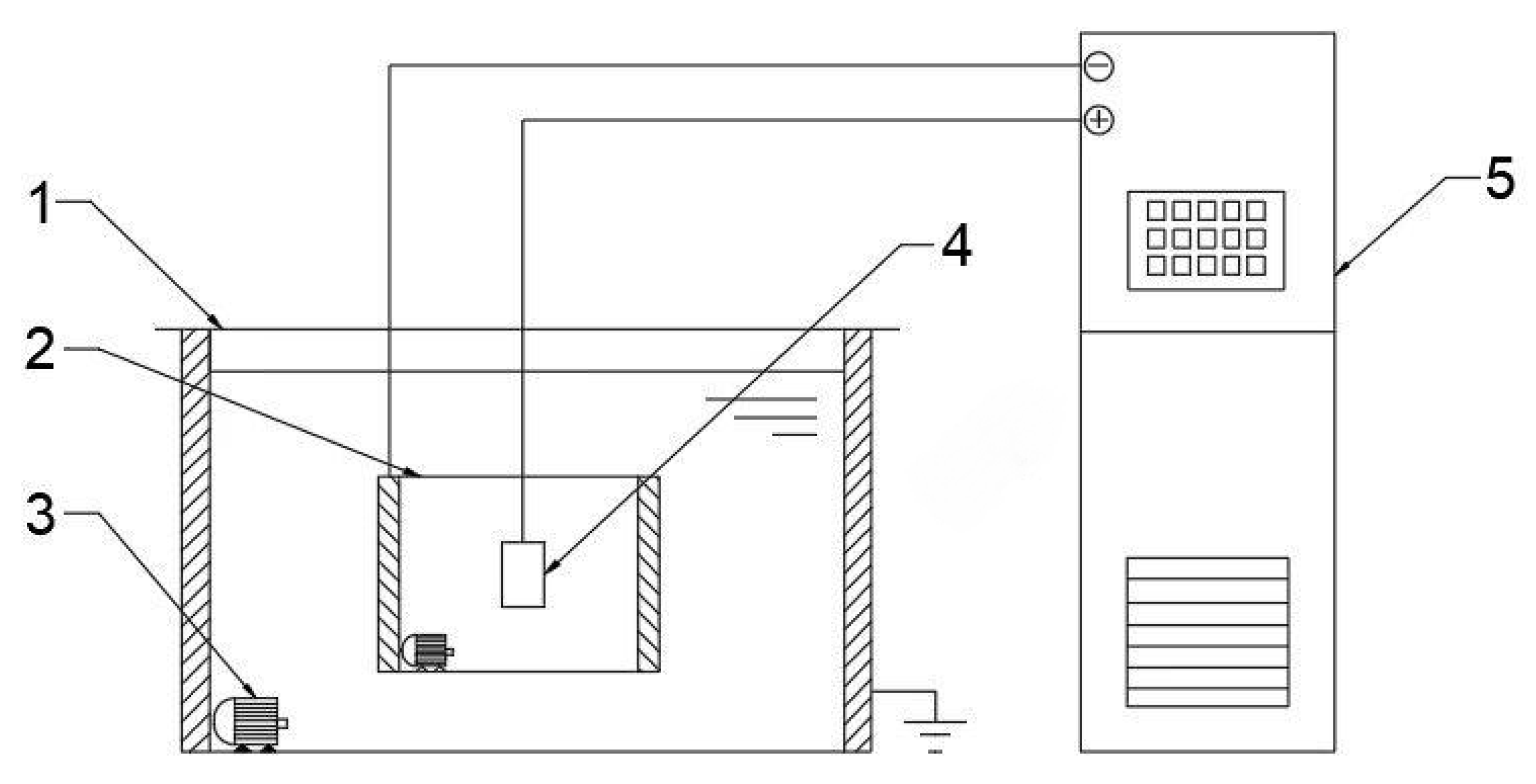
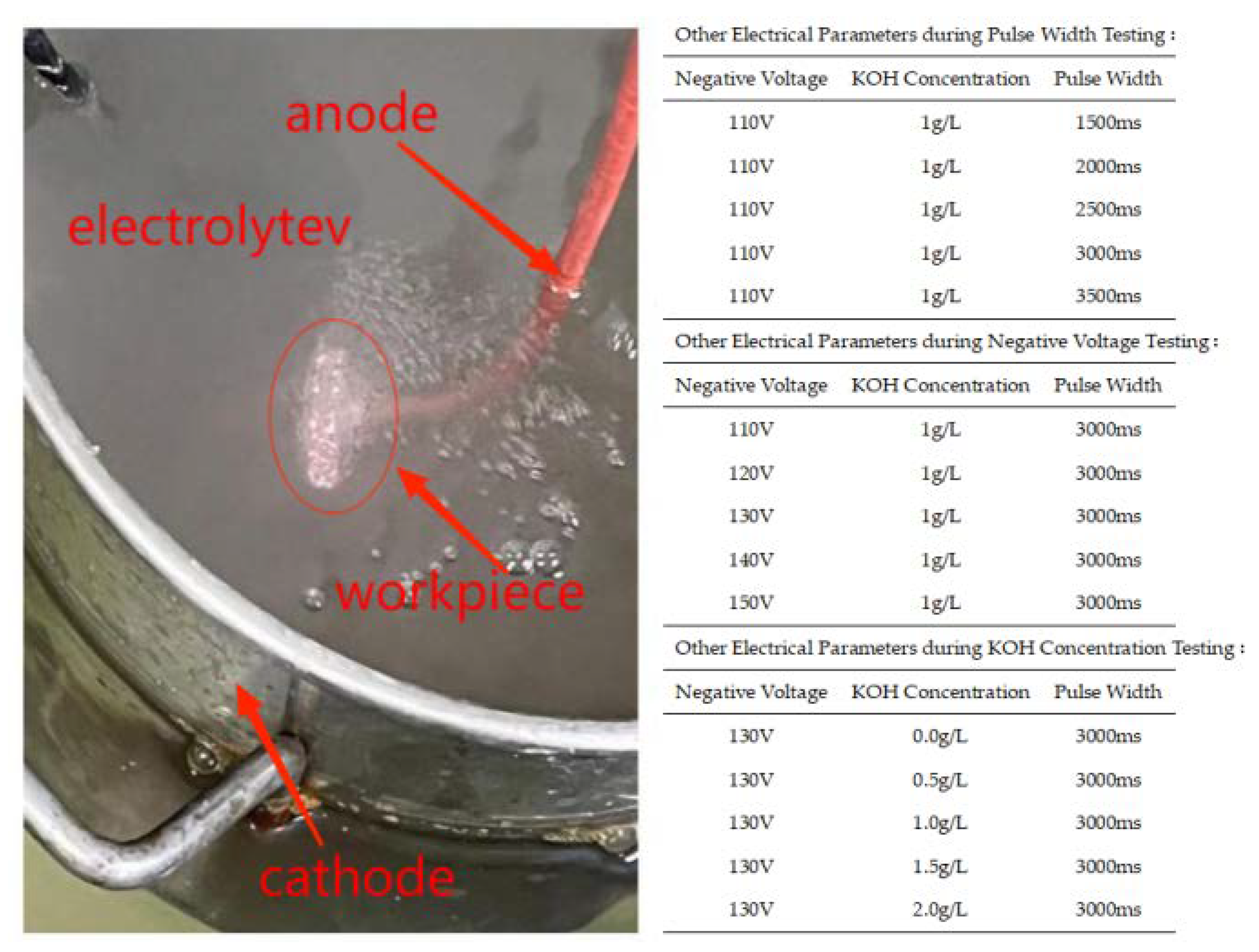
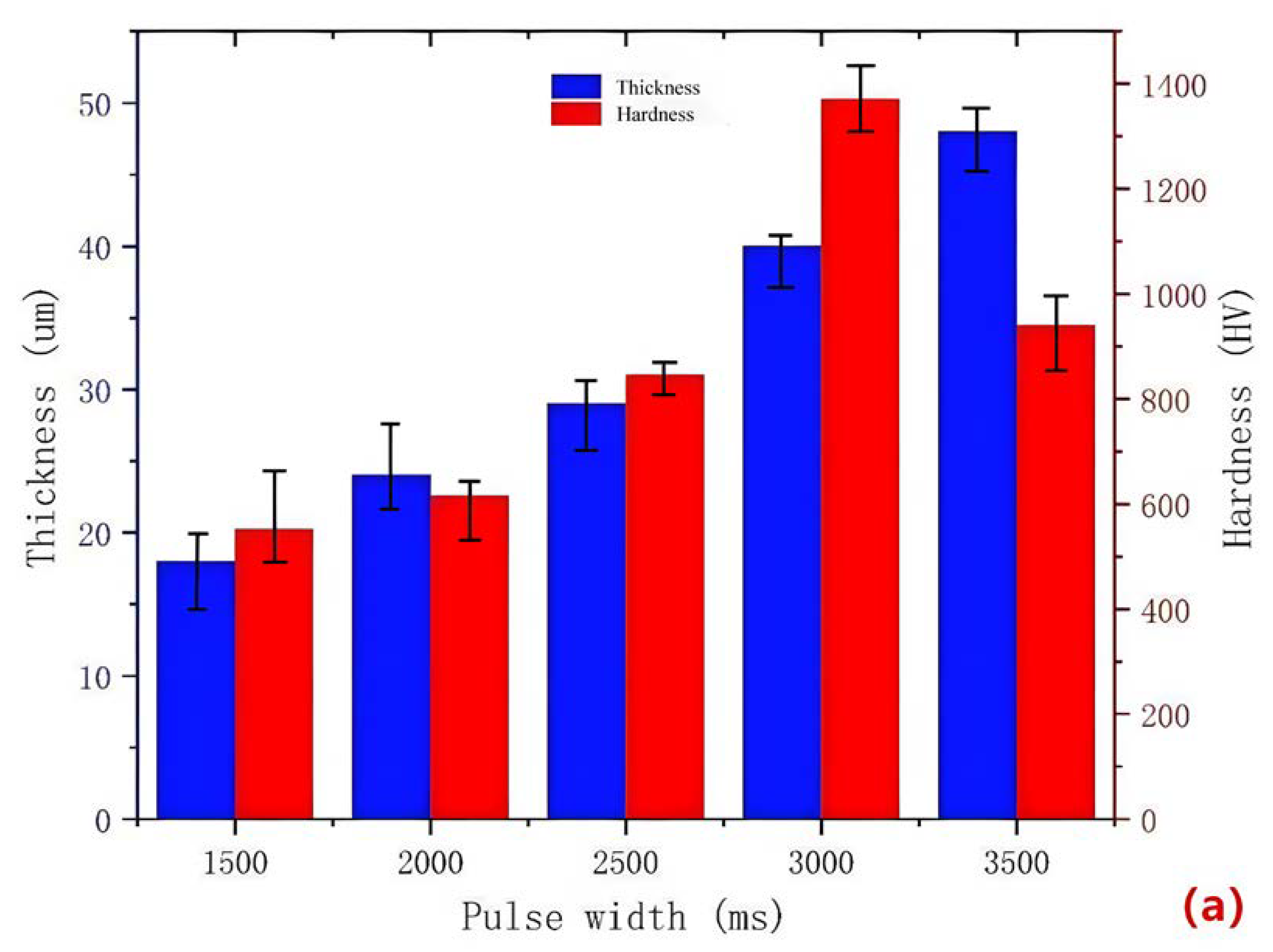
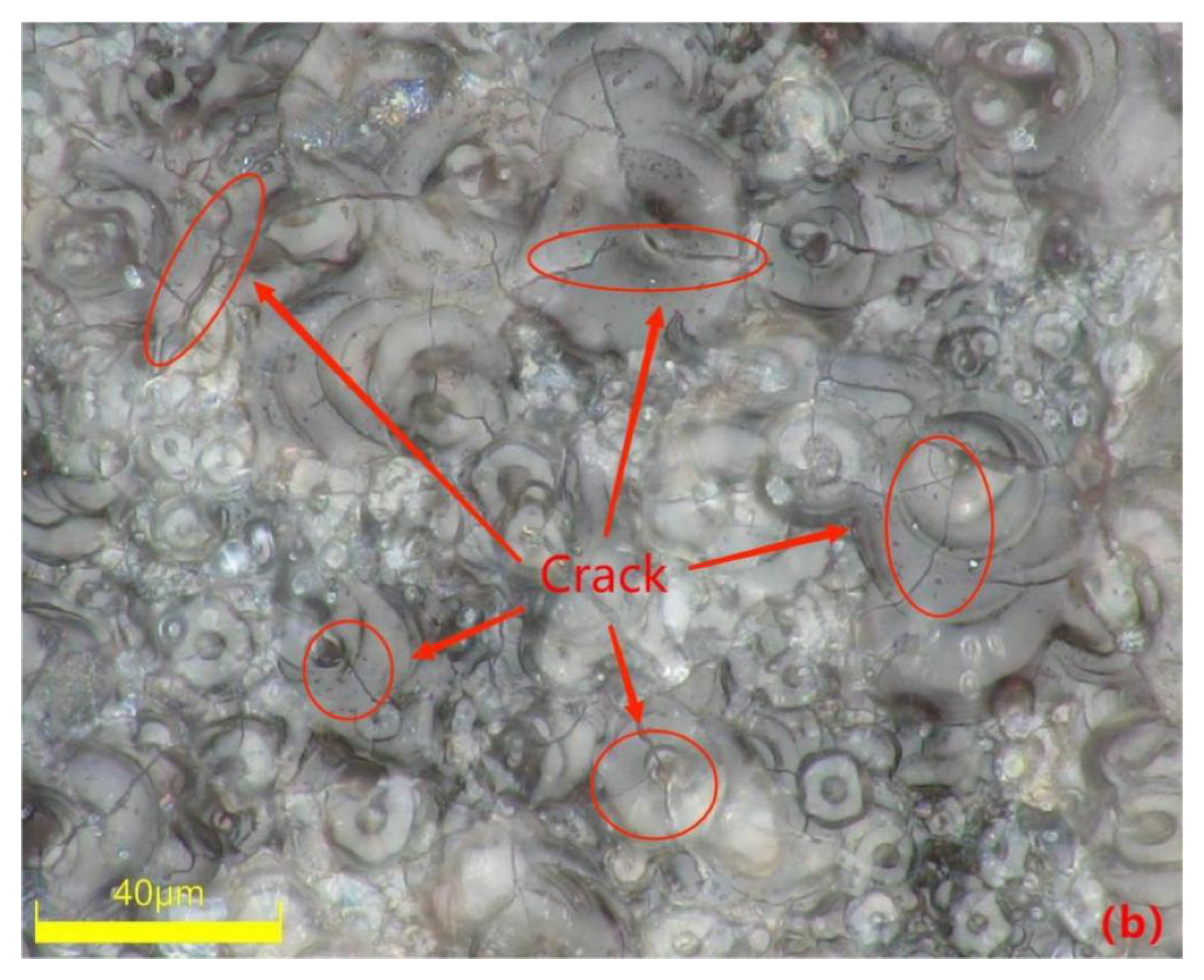
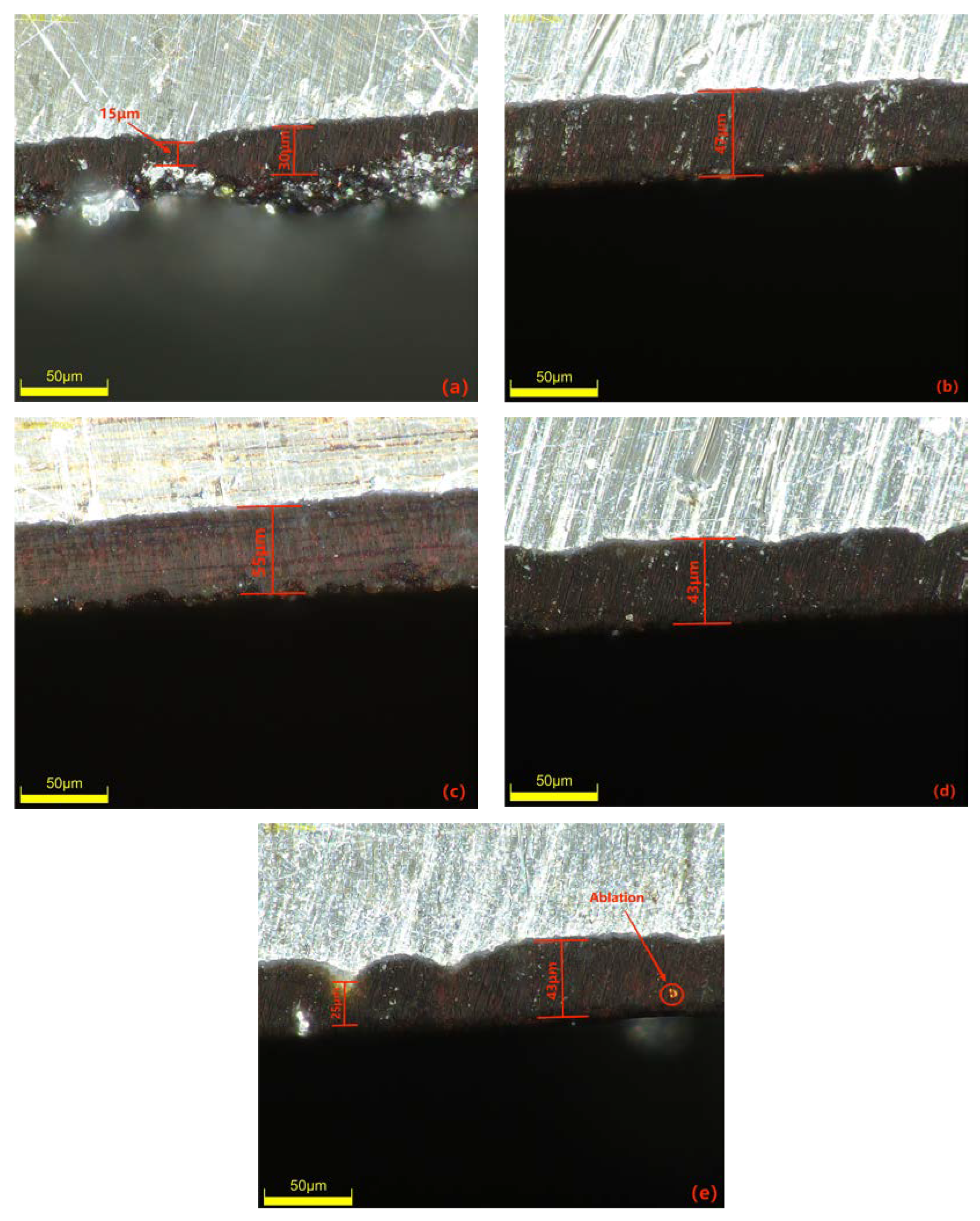
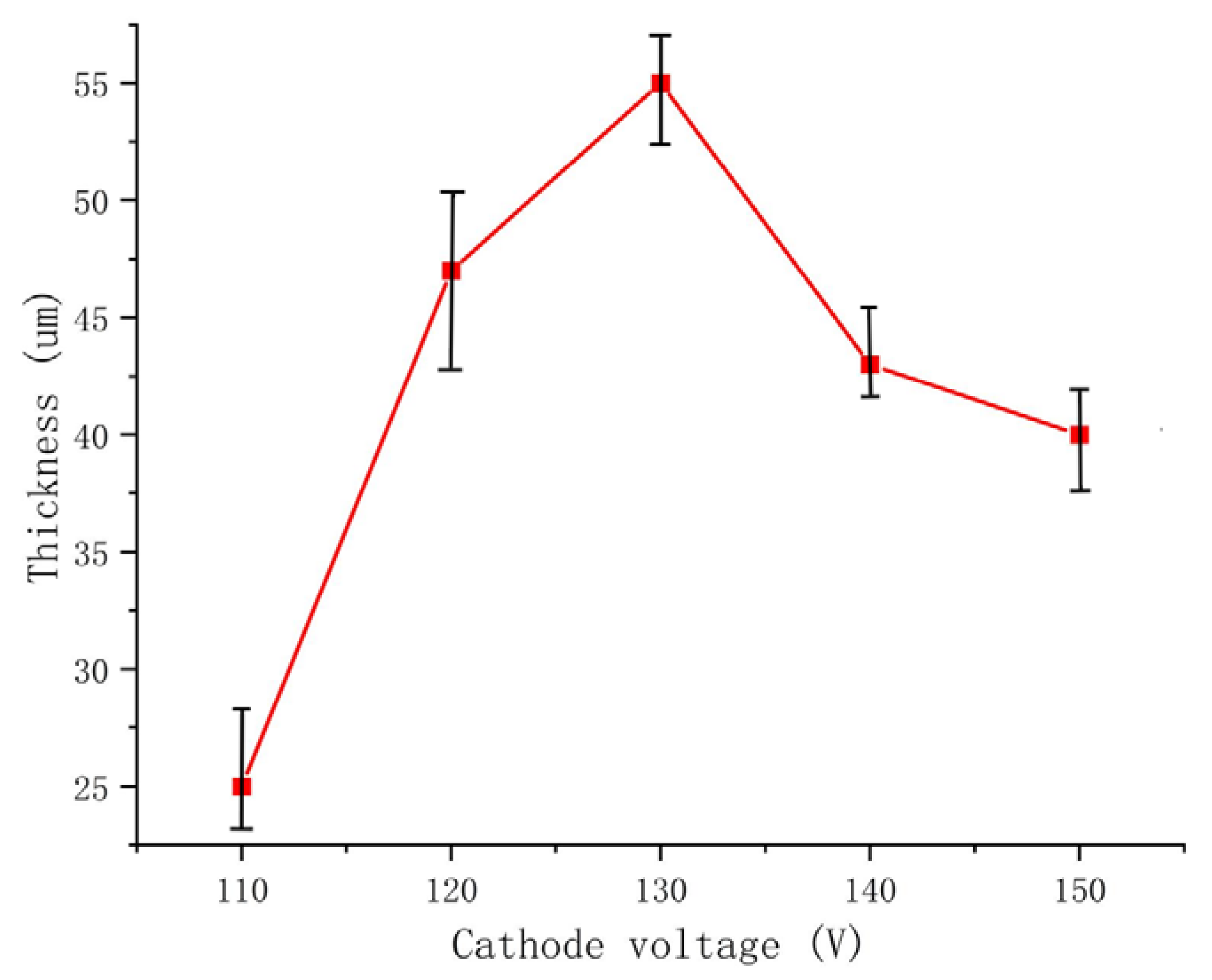
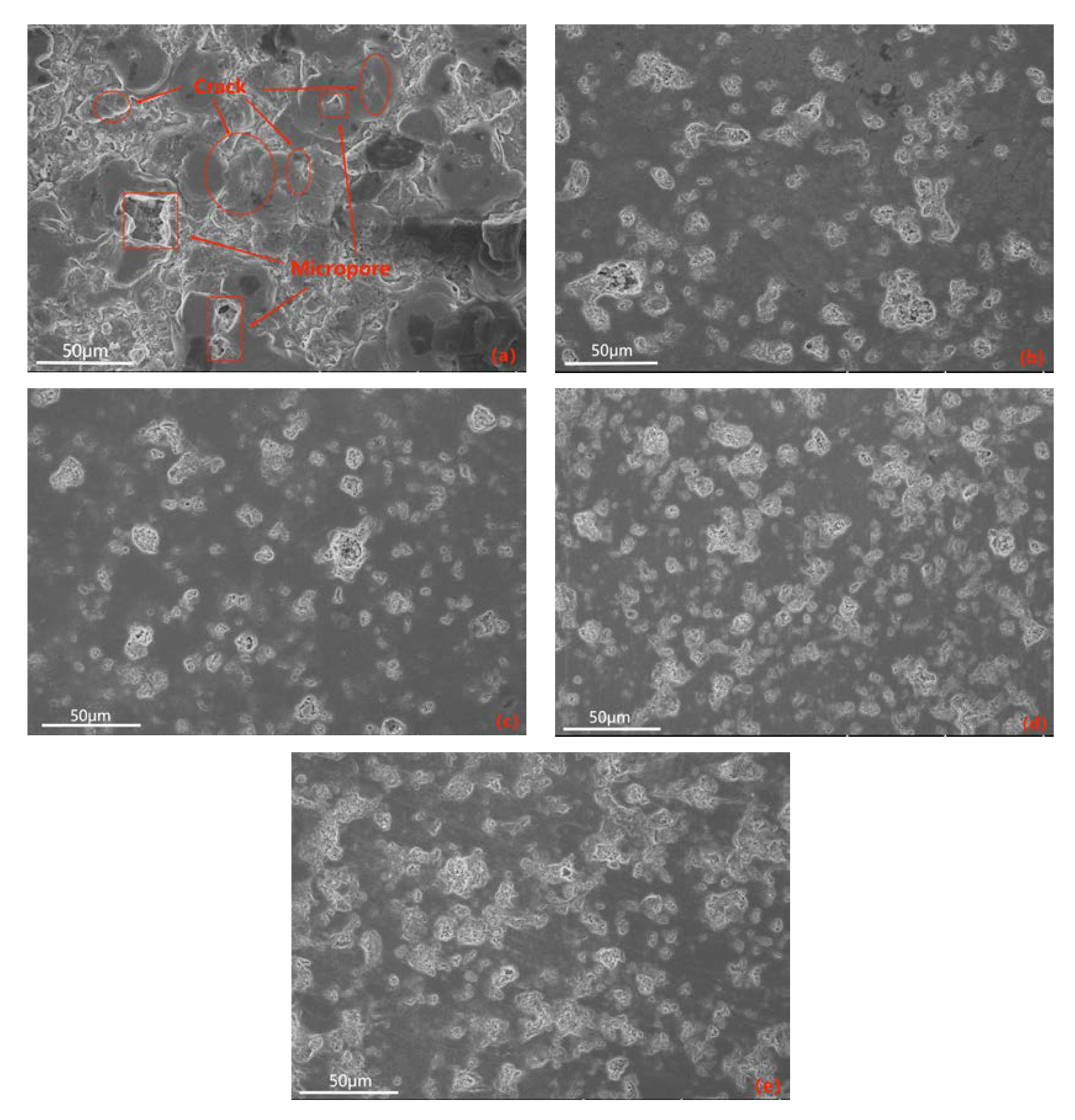
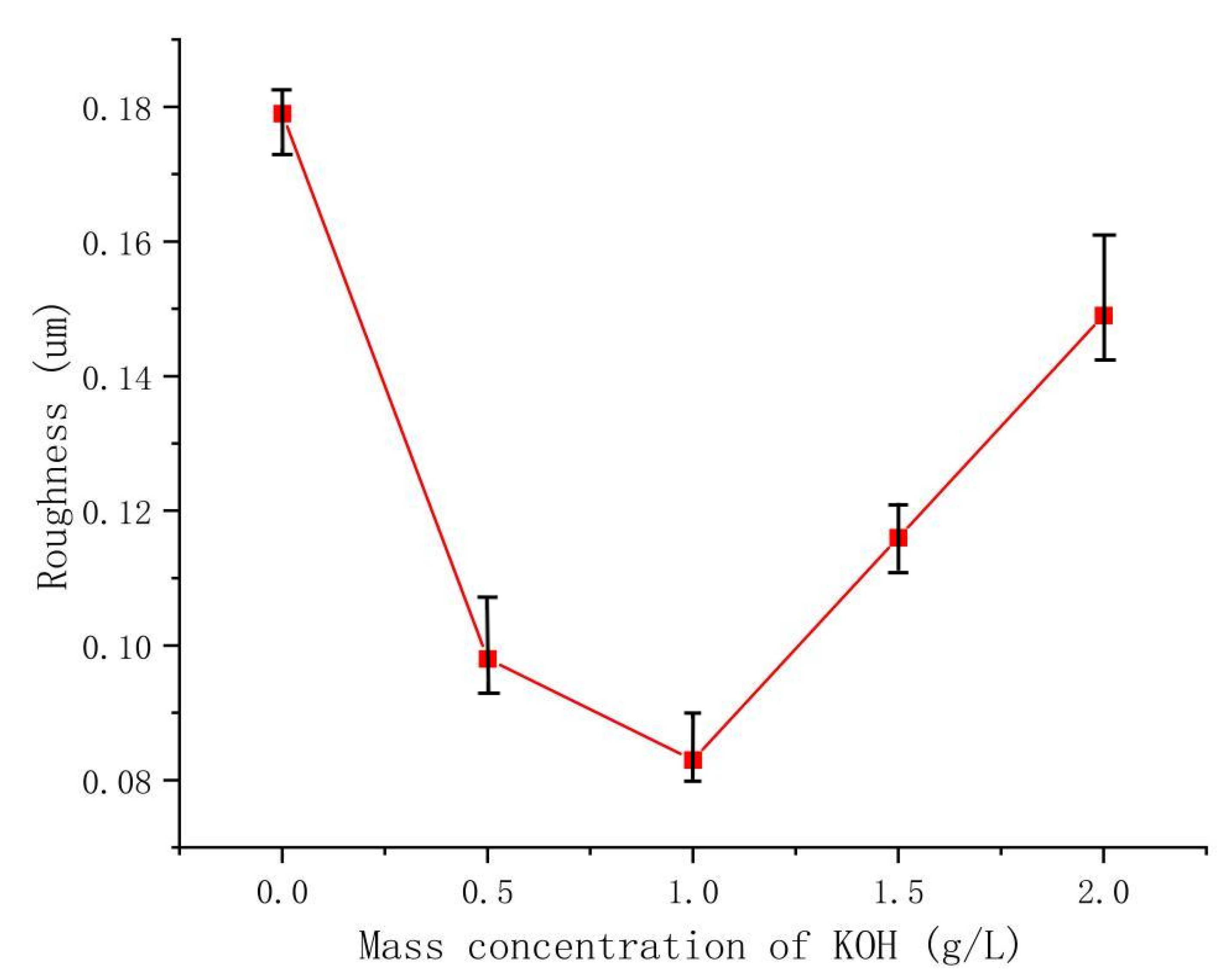
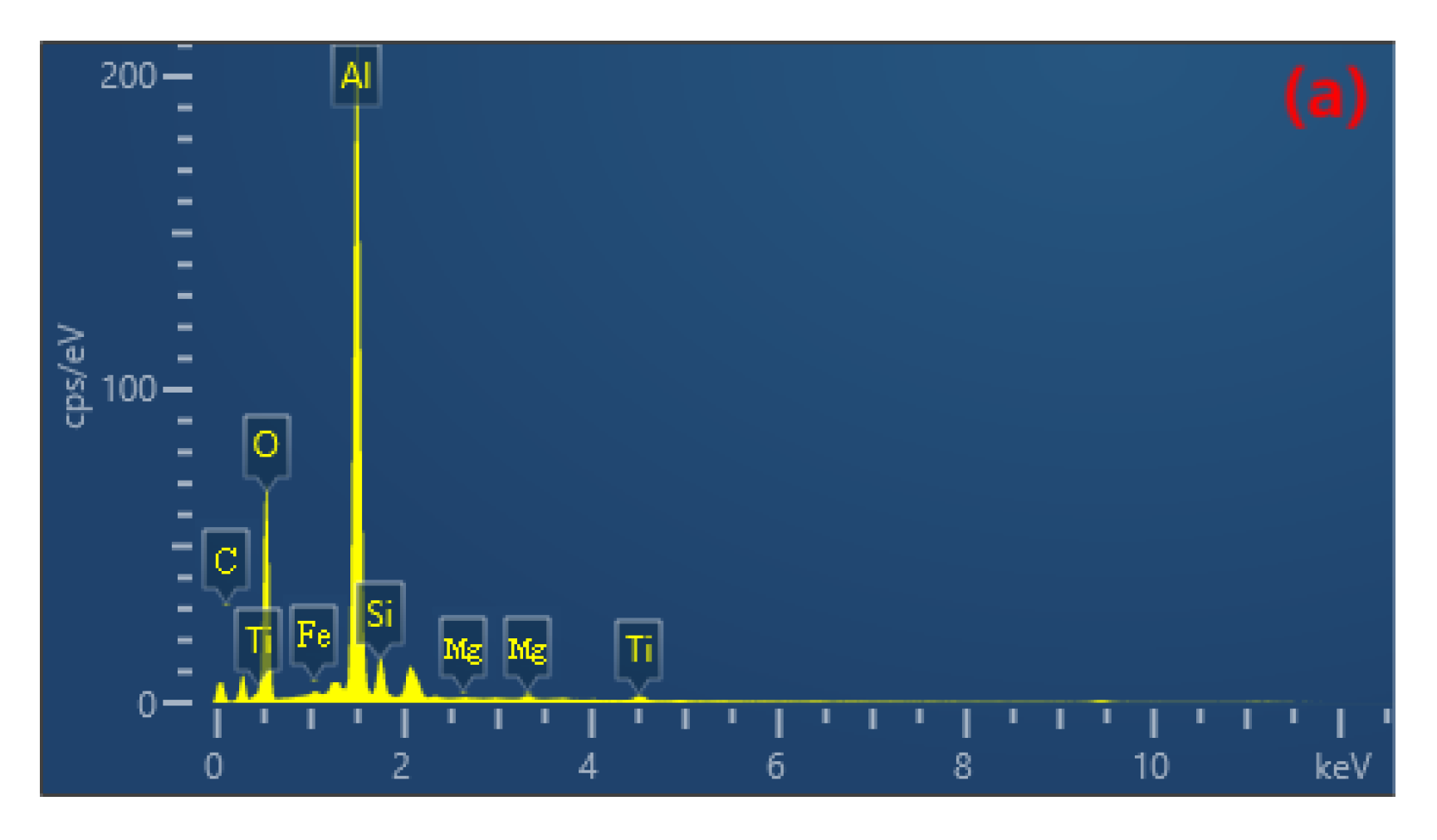
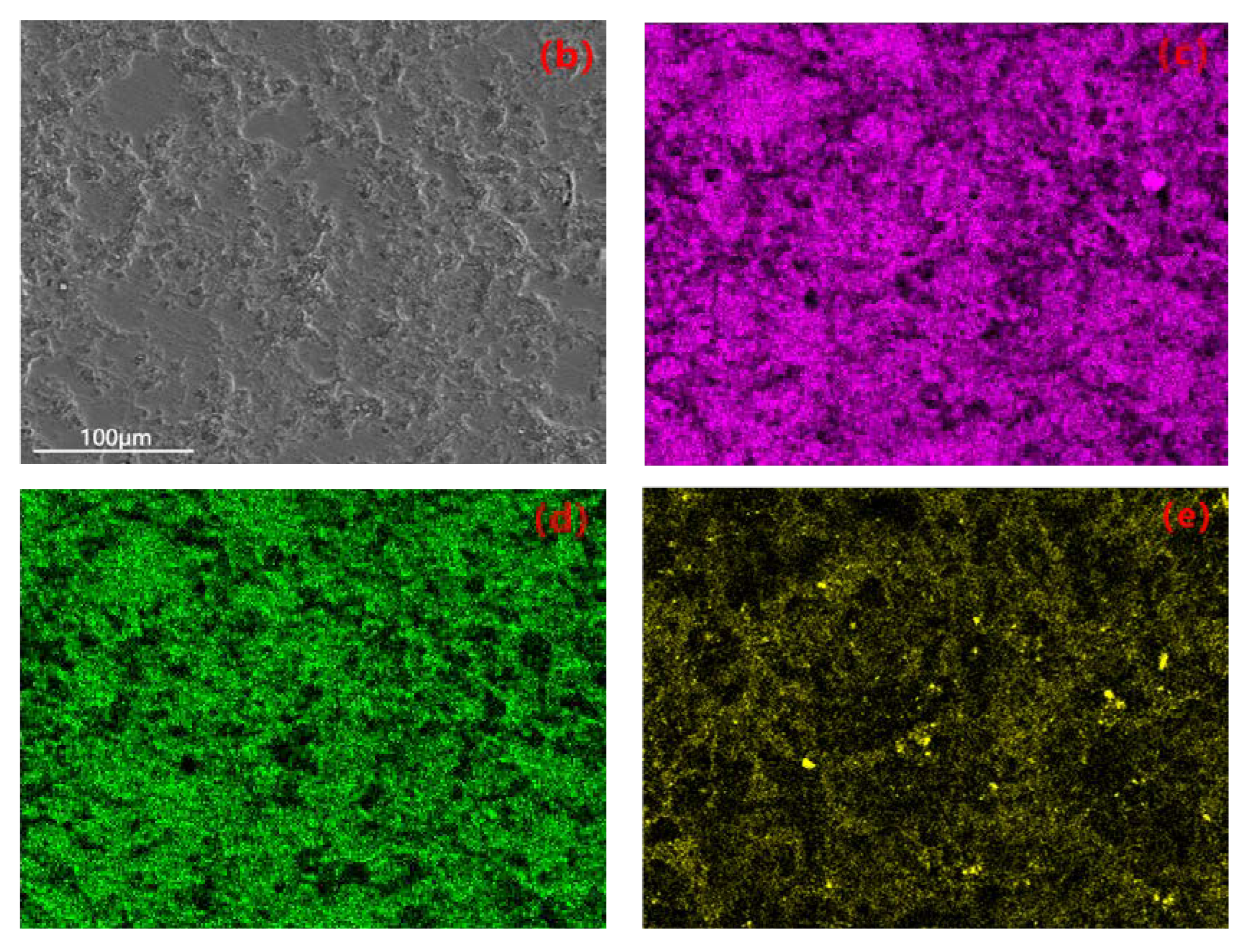


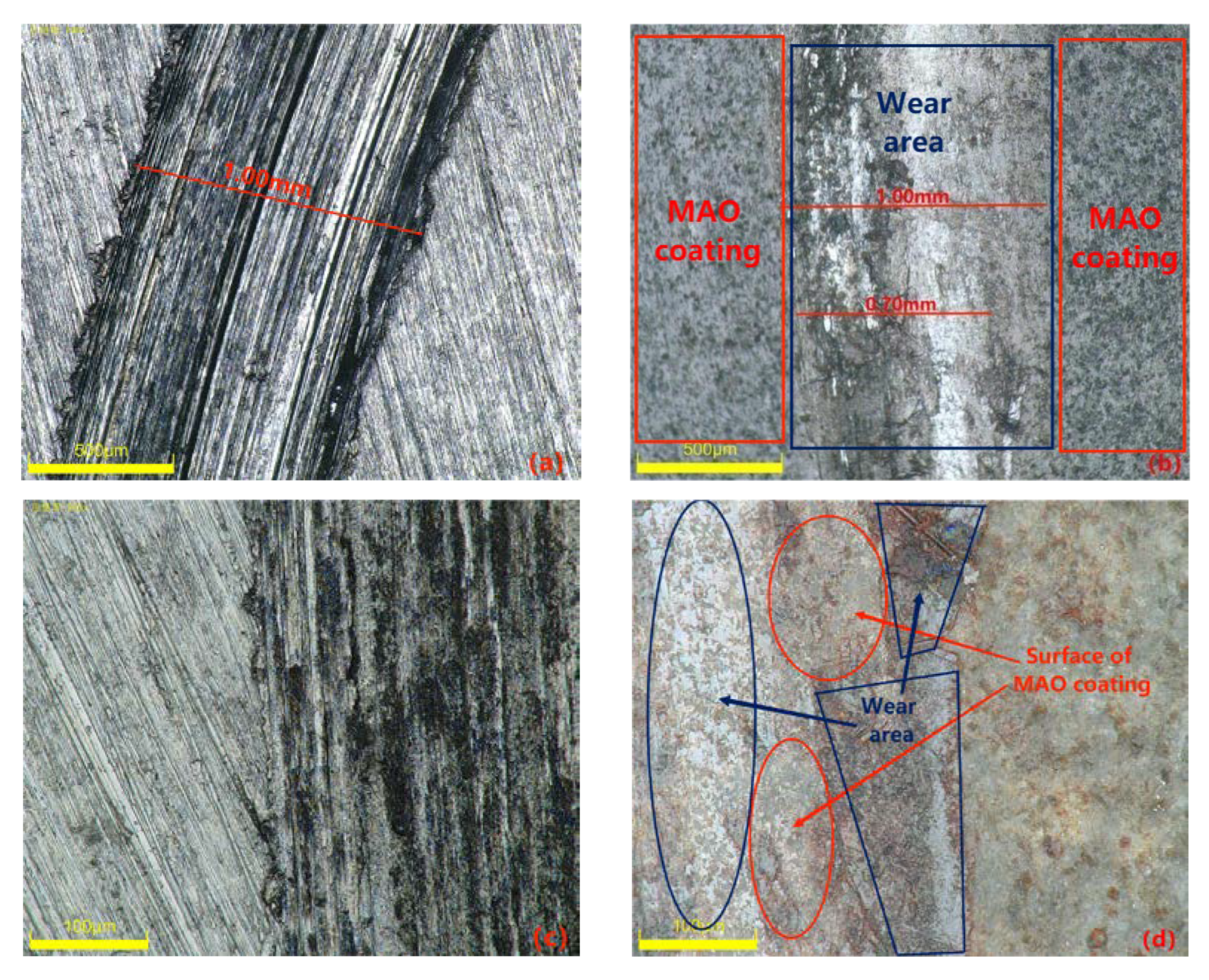
| Element | Si | Cu | Mn | Mg | Fe | Ni | Zn | Ti | Others |
|---|---|---|---|---|---|---|---|---|---|
| Content | 5.5~6.5 | 2.5~3.5 | ≤0.03 | 0.25~0.45 | ≤0.15 | ≤0.03 | ≤0.05 | ≤0.2 | ≤0.1 |
Disclaimer/Publisher’s Note: The statements, opinions and data contained in all publications are solely those of the individual author(s) and contributor(s) and not of MDPI and/or the editor(s). MDPI and/or the editor(s) disclaim responsibility for any injury to people or property resulting from any ideas, methods, instructions or products referred to in the content. |
© 2023 by the authors. Licensee MDPI, Basel, Switzerland. This article is an open access article distributed under the terms and conditions of the Creative Commons Attribution (CC BY) license (https://creativecommons.org/licenses/by/4.0/).
Share and Cite
Lv, P.; Zhang, X.; Yin, T.; Wang, Z.; Dong, Q.; He, L.; Zheng, S. Processing and Analysis of Micro-Arc Oxidation Coating on 319S Aluminum Alloy. Coatings 2023, 13, 1024. https://doi.org/10.3390/coatings13061024
Lv P, Zhang X, Yin T, Wang Z, Dong Q, He L, Zheng S. Processing and Analysis of Micro-Arc Oxidation Coating on 319S Aluminum Alloy. Coatings. 2023; 13(6):1024. https://doi.org/10.3390/coatings13061024
Chicago/Turabian StyleLv, Pengxiang, Xiaozhou Zhang, Tingting Yin, Zhen Wang, Qi Dong, Li He, and Shuangyang Zheng. 2023. "Processing and Analysis of Micro-Arc Oxidation Coating on 319S Aluminum Alloy" Coatings 13, no. 6: 1024. https://doi.org/10.3390/coatings13061024
APA StyleLv, P., Zhang, X., Yin, T., Wang, Z., Dong, Q., He, L., & Zheng, S. (2023). Processing and Analysis of Micro-Arc Oxidation Coating on 319S Aluminum Alloy. Coatings, 13(6), 1024. https://doi.org/10.3390/coatings13061024






